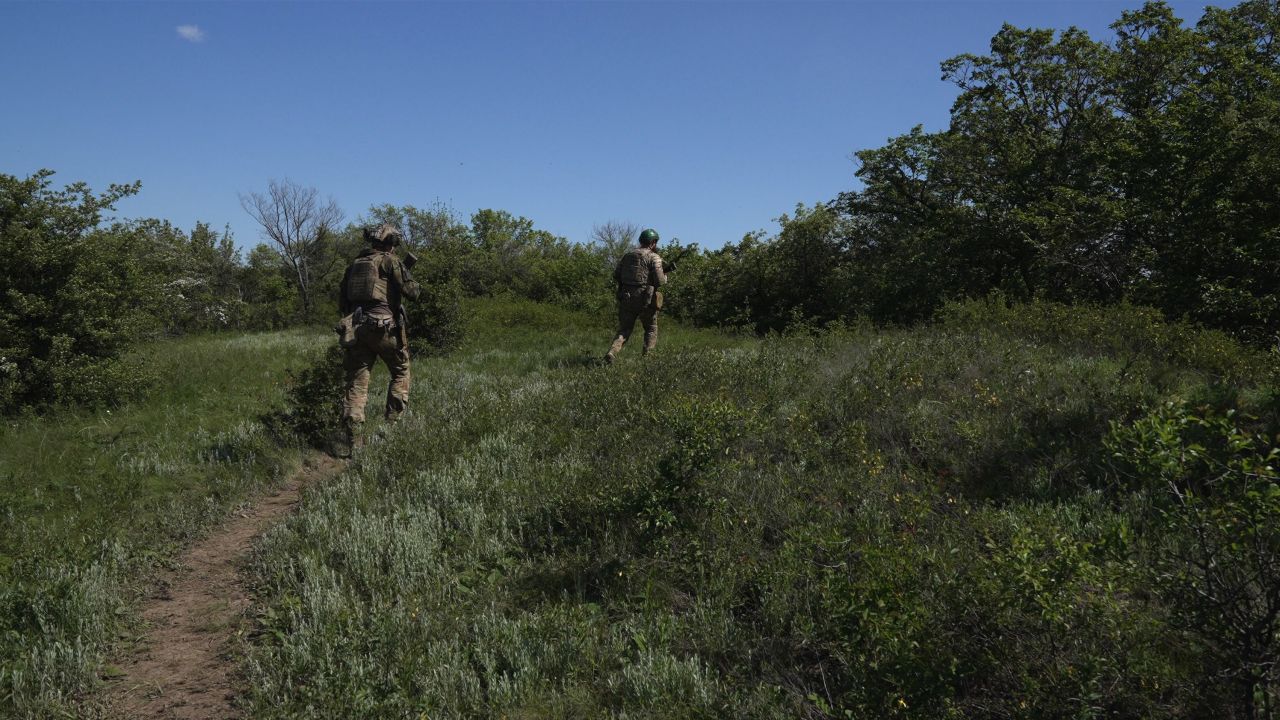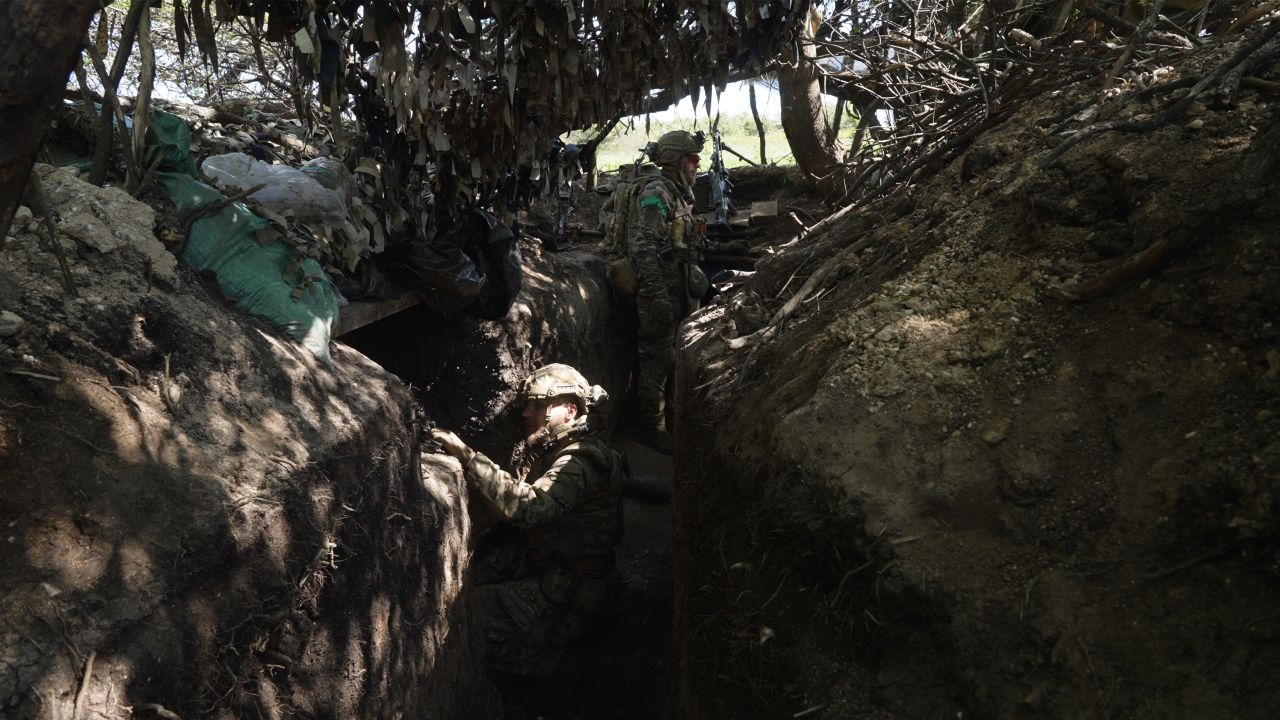
Outskirts of Bakhmut
CNN
—
Scrambling out of a Soviet-era armored troop carrier, the first thing we look for is shelter from attack.
There are no artillery shells incoming right now, but the shredded trees around us are a silent warning this rare moment of calm on this frontline in Ukraine may not hold.
Honza, a combat medic, waves towards the withered woodland glen around us. “Vietnam” he says. It has got that war-worn feel, with shafts of sun slicing through the foliage.
He is taking us to see recent battlefield gains around Bakhmut, Ukraine’s biggest military gains since it forced Russian troops out of Kherson last November.
Summer is coming and everything around Ukraine’s front lines is changing. There is an energy and anticipation the war here is about to kick up a gear. The tracks we are walking on are drying out, the troop carrier that brought us in riding on rather than sinking into the hardening mud.
Ukraine’s Western allies say shaping operations – essentially, out maneuvering the enemy – for a coming counteroffensive are already underway.
Commanders won’t say if what we are about to see is part of that. Honza, however, is thrilled by their gains. “I love it, I love it” he says.
Vietnam is a strong analogy to make. Artillery fire is as deadly now as it was then, but the battlefield of today’s war is a high-tech killing zone compared to what Vietnamese and US soldiers experienced.
The trees that in the past few weeks have burst into full leaf hide our trail to the trenches from the probing gaze of Russian drones and the artillery fire they call in on Ukraine’s troops.
In Vietnam the denser the wood, the greater the risk of enemy ambush, but here it is the opposite.
As Honza leads us out into open fields a detonation to our left followed by a whistle has us all readying to fall to the floor. The shell arcs overhead and lands several hundred meters to our right.
Mentally we are all mapping not just the visual terrain, but the audible too.
We hear the sound everyone here dreads: the low whine of a drone. As high-tech as this war is, Honza and the others with us can’t tell if its Ukrainian or Russian.
In his command bunker a couple of hours earlier he had shown us multiple drone video feeds of the battlefield searching for any possible Russian troops massing for a counterattack.
The quality is incredible, each time a Russian soldier put his head out a trench we could see him. This war is like no other, both sides spying on each other in real time, better able to rain death on each other, if they have enough ammo and guns.

As we sprint towards the welcoming mud steps of the closest trench another bit of the mental gymnastics of a frontline fighter is triggered – did the drone see us, do the Russians care to hit us right now, are we a worthwhile target, and are their guns and communications primed and ready for it.
Below the trench’s camouflage netting we pause, regroup and chat about the new gains the frontline troops around us are defending.
Honza is hungry for more action, “we all just want to take our territory back and kill maximum possible Russians we can.”
“But you never used to love killing Russians, it must feel kind of crazy” I reply.
“It feels crazy ” he says, “on maybe (the) first (or) second time, but then you will know it’s your mission its why you are here to defend your land.”
In the trenches here, everyone knows when the counteroffensive comes it will be bloody and brutal but buoyed by the gains around them, fear of drones and artillery won’t hold them back.


